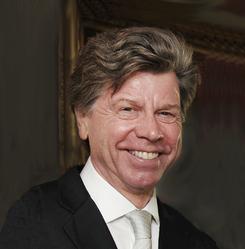
Are you an inspirational leader?
Leadership is constantly evolving, whether it’s how to strategically lead a business into the future or how to innovate in a digital world that is changing by the second. But there is one facet of leadership that remains the same – and that is the importance of being inspirational.
Employees are what drive a company forward, and if they aren’t inspired or they don’t feel motivated by their leadership, both leaders and their companies will ultimately miss the mark.
An inspirational leader starts by listening, then engaging and then developing their people.
Listen
Listening is the key to truly connecting with employees. And from listening, trust develops. Leaders have to take a moment to step outside their own roles and understand what it is that motivates their top performers, what ideas can they share, and how effectively they function with their teams. Top performers provide key information about the rest of the organization.
Successful leaders are able to call on their most valuable employees in middle management, for example, to help them get clarity on the big picture. They are the ones who can walk alongside leaders and help them understand the inner workings of the rest of the organization. So without them, many leaders would be lost – as it is nearly impossible for leaders to spend individualized time with every person in the company.
Engage
A study conducted by SHRM indicates that employees are 87 percent less likely to leave a company than those who are disengaged. In addition, further, studies show that only 26 percent of leaders today are creating an engaging environment for their people. Employee engagement begins with leaders showing that they value their people and that they are willing to spend time and resources on helping them capitalize on their strengths.
Leaders should make it a priority to connect with their key people, build strengths around them, and engage them to exceed expectations. And most importantly, they must make sure that each of their top performers knows that they are truly valued.
So taking the time to connect with key people in the organization can manifest itself as:
- Setting aside weekly or biweekly meetings with managers in the organization.
- Taking the time to understand the manager’s and their team’s workload, and any concerns that might exist.
- Reinforcing a job well done, while providing constructive feedback on growth opportunities.
In order to keep your employees engaged, you must make a solid commitment to developing their potential. As a result, business results can become more predictable, and you can ensure that you retain more top performers.
Develop
Development can take the form of personalized coaching, team building, or management training—or a combination of those. Ongoing development is not limited to the new employee: team members, leaders and colleagues all benefit greatly when collaboration and trust exist. Organizational coaches are able to assess your specific situation and provide personalized programs based on your company’s needs.
This can be done by creating appropriate development programs for both your leaders and your employees. Start by determining what your organization needs and what goals you wish to achieve. Then, you’ll be ready to assess what kinds of plans and programs are available to address the specific issues, challenges and objectives that matter to you.
Especially now, with people being asked to do more and more with less resources, development is essential to the future of an organization. It could be difficult and restrictive for a leader to tackle coaching and development on their own, so bringing in the objective insights from a coach could enhance the organization’s resources in a short amount of time.
Such development programs are entirely customizable based on the needs of the organization. Below are some examples of what some programs might look like. Companies will often use a combination of the ideas below or will seek out something entirely specialized to suit the company’s goals:
1. Coaching: customized, in-depth coaching process and developmental plan from an objective, third-party coach that helps pinpoint abilities, motivations and growth opportunities.
2. Top Talent Retention: a consultant works one-on-one with top performers to help them assess their talents, identify hidden potential and clarify their goals, while linking their abilities and interests with the needs of the organization. Increasing top employees’ feelings of value increases loyalty and tenure.
3. Validation Study: process that helps a company get a clear sense of their top performers and their strengths, what distinguishes them and how to both hire people like your top talent and develop those who are currently on board who have high potential.
Being an inspirational leaders means being able to listen, and from that information, engage and develop the talent you have on board. There is truly nothing more important, because if leaders don’t take the time to listen to and recognize their valuable employees, another company surely will.
About Caliper – For nearly half a century, Caliper has been helping companies achieve peak performance by advising them on hiring the right people, managing individuals most effectively and developing productive teams. The accuracy, objectivity and depth of our consulting approach enable us to provide solutions that work for over 25,000 companies. To find out more about how Caliper can help you identify and develop people who can lead your organization to peak performance, please visit us at www.calipercorp.com or call us at 609-524-1200. Email [email protected] to contact Patrick.









